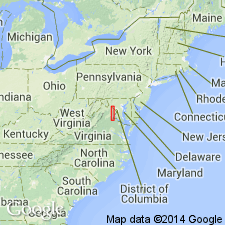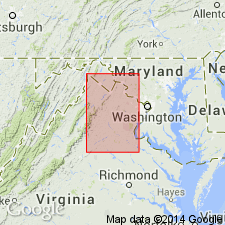
- Usage in publication:
-
- Barboursville Conglomerate Member
- Modifications:
-
- Named
- Dominant lithology:
-
- Conglomerate
- AAPG geologic province:
-
- Piedmont-Blue Ridge province
Summary:
Isolated masses of silicate and quartzose-feldspathic clasts in a grayish-maroon matrix, exposed throughout the area south of Barboursville and the Robinson River, are here named the Barboursville Conglomerate Member of the Bull Run Formation. Maximum thickness is 450 feet (150 m). Age is Late Triassic.
Source: GNU records (USGS DDS-6; Reston GNULEX).

- Usage in publication:
-
- Barboursville Conglomerate Member†
- Modifications:
-
- Abandoned
- AAPG geologic province:
-
- Piedmont-Blue Ridge province
Summary:
The Barboursville Conglomerate Member of the Bull Run Formation is here abandoned. It is separated into two distinct units, the Rapidan Member of the Manassas Sandstone and the Haudricks Mountain Member of the Tibbstown Formation.
Source: GNU records (USGS DDS-6; Reston GNULEX).
For more information, please contact Nancy Stamm, Geologic Names Committee Secretary.
Asterisk (*) indicates published by U.S. Geological Survey authors.
"No current usage" (†) implies that a name has been abandoned or has fallen into disuse. Former usage and, if known, replacement name given in parentheses ( ).
Slash (/) indicates name conflicts with nomenclatural guidelines (CSN, 1933; ACSN, 1961, 1970; NACSN, 1983, 2005, 2021). May be explained within brackets ([ ]).

